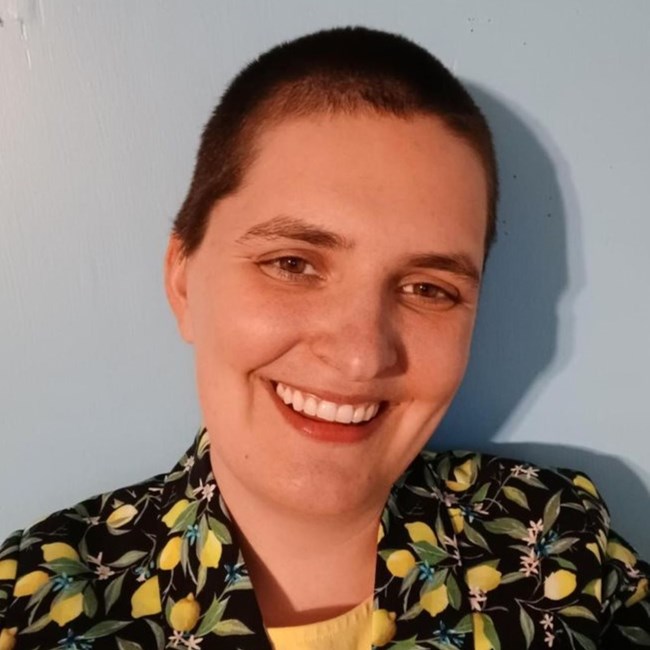Last updated: February 14, 2025
Article
Meet the Mellon Fellows: Dr. Sarah Pawlicki

Dr. Sarah Pawlicki
University of Minnesota
PhD, History
Host Site: National Historic Landmarks Program
Fellowship Title: Women's History Fellowship
Project Description: Dr. Pawlicki will develop a strategy, including new interpretation and outreach, for enhancing the representation of women's history in the National Historic Landmarks Program using an intersectional approach.
Bio:
Sarah Pawlicki (she/they) earned a PhD in History with minors in Heritage Studies and Public History and Native American and Indigenous Studies at the University of Minnesota in 2023. She is a white settler scholar currently living on Kiikaapoi land. Sarah’s dissertation analyzed the relationship between religion and labor in seventeenth-century Massachusetts, using methods drawn from Indigenous, queer, and disability studies. Their research has appeared in Nursing Clio and Early American Studies.
Sarah has collaborated on forthcoming essays in The Bloomsbury Global Encyclopedia of Women in Architecture and An Accessible Past: Making Historic Sites Accessible. As a public historian, Sarah has worked on projects ranging from mapping and interpreting sites of disability history with REPAIR: Disability Heritage Collective to creating history-based Ethnic Studies lesson plans for high- and middle-school students in Minnesota.
Tell us about your research interests!
My research interests are very, very broad and eclectic, which is part of why I'm so grateful to be working on a project with such a broad scope: enhancing the representation of women's history across the National Historic Landmarks program. I joke that I decided to study history because I couldn't decide between studying literature, sociology, psychology, religion, philosophy, or law - so I picked a discipline that could neatly encompass all those things! For my dissertation research, I studied how religious beliefs about death and afterlives shaped labor practices for both Native (specifically, Ninnimissinuok) communities and English colonizers on the eastern Atlantic seaboard throughout the seventeenth century. I drew on insights from disability studies, LGBT/queer studies, and Indigenous studies quite a bit in my dissertation; I'm fascinated by how these interconnected disciplines inform each other.
In terms of explicitly place-based research: I'm a founding member of REPAIR: Disability Heritage Collective. REPAIR stands for Rethinking Equity in Place-based Activism, Interpretation, and Renewal, and our work concentrates on mapping and interpreting disability history sites. As part of that project, I've written case studies on a variety of subjects, but the ones most relevant to the work I'm doing with the NHL program are probably one focused on the Deaf women who worked at the Milwaukee Ordnance Plant during World War II and a series about several inmates incarcerated at the Shakopee State Reformatory for Women in Minnesota throughout the 1930s, 1940s, and 1950s.
How does your research connect to the mission of the National Park Service, which serves both parks and communities?
My research connects to the National Park Service's mission through its focus on telling all Americans' histories in a nuanced way and from many different perspectives. I'm passionate about representation and equity, and I feel personally invested in ensuring that people can see themselves in the stories told through historic places. I also think it is important for people to educate themselves about histories they might not personally relate to strongly, but that are relevant to their neighbors, their classmates, their coworkers, and their families. Greater knowledge can foster greater empathy, and I think that's a tremendously important quality to inspire.
What are you most excited about as you begin your fellowship?
I'm excited about the possibilities for doing all different kinds of history work in this job. Women's history encompasses so much! In this fellowship, I have the privilege of dipping into histories of eighteenth- and nineteenth-century women's religious communities in the morning and heading into World War II home front histories in the afternoon. It is a great way to satisfy curiosity and keep learning! At heart, I do this work because I'm a storyteller. I love writing and thinking about how to share people's histories in a way that authentically conveys their experience and makes clear why we should care about their stories. History work involves a lot of empathy and curiosity about people's experiences, and I'm perpetually surprised by the stories we can uncover and tell through persistent research.
Do you have a favorite story about your personal experience with the NPS, or a park or program you admire?
A personal favorite is the Eugene V. Debs House in Terre Haute, Indiana. The house has a lot of meaning for me because, as a student at Parkland College, my first "A with Honors" paper was about Debs' early life and career. Visiting his home was a vivid reminder of the stretch of time when I was slowly realizing that I could actually become a historian and make it my career. In terms of specifically gender studies, though, a site I'm super eager to visit is the Pauli Murray Family Home in Durham, North Carolina. It was designated as a National Historic Landmark recently, as part of an effort by the National Collaborative for Women's History Sites, an organization that's doing a ton of great work. I'm so curious and excited about the interpretive programming going on there.
